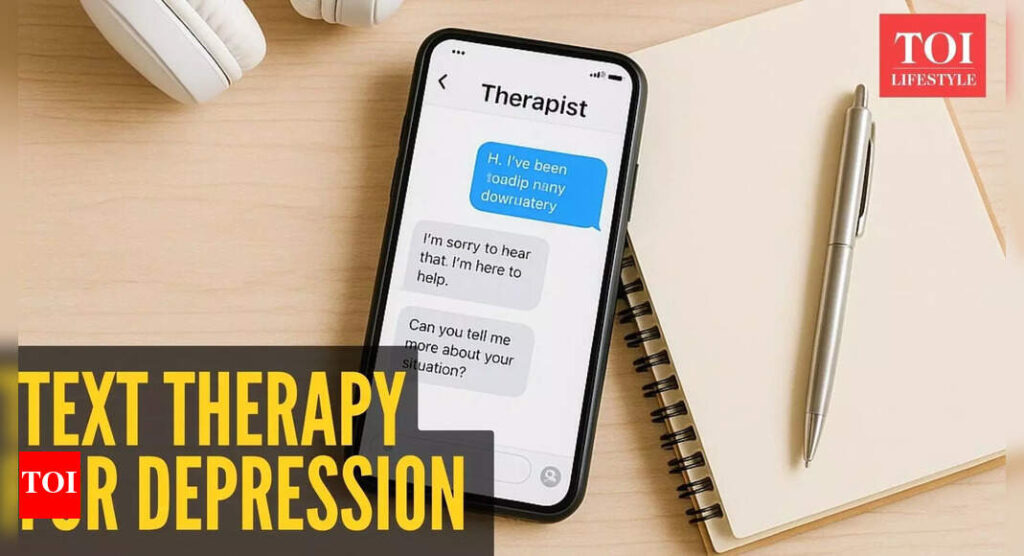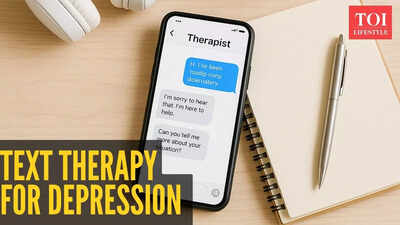“Depression therapy goes ‘chat mode’: How text therapy is changing depression treatment” |

Text has come a long way from the days of brief “send money” messages to the modern era of doing almost everything through a screen. We now shop, work, hire, fire, fall in love, and even break up — all by text. And if you’ve done with all this, there’s something new you can add to the list: easing your depression through text. According to a new study published in JAMA Network Open, text-based therapy can effectively reduce symptoms of mild to moderate depression, performing as well as traditional video counselling.
The rise of therapy by text
Over the past decade, text-based therapy platforms such as BetterHelp and Talkspace have transformed the mental health landscape. These services connect users with licensed therapists who respond through live chat or messages, allowing conversations to unfold throughout the day. This format gives users space to reflect, reply at their own pace, and seek help from the comfort of their homes.The appeal lies in flexibility and accessibility. For many, texting feels less intimidating than speaking face to face, making it easier to open up about personal struggles. The result is a growing preference for asynchronous therapy, where thoughtful, message-based exchanges replace traditional real-time sessions.
Inside the study
The recent randomised clinical trial involved 850 adults diagnosed with mild to moderate depression. Participants were divided into two groups: one received weekly video therapy sessions, while the other had unlimited access to text or email therapy. After 12 weeks, both groups showed similar levels of improvement in their symptoms, suggesting that texting a therapist can be just as effective as live video therapy.“We were pleasantly surprised to see that it was as good as weekly video therapy,” said Dr Patricia A. Areán, co-author of the study and former professor at the University of Washington School of Medicine. “We didn’t really find any differences in the outcomes.”
Why it matters
The findings could reshape how mental health care is delivered. Despite its growing popularity, most insurers still do not cover text-based therapy, citing limited evidence of its effectiveness. The new study may help change that, paving the way for more affordable and flexible access to therapy.Dr Areán said the results show the potential of text therapy to reach people who cannot easily attend live sessions, whether because of geography, cost, or busy schedules. “They knew they needed data,” she added, noting that text-based care could fill a major gap in mental health accessibility.
Who it helps and who it doesn’t
While promising, experts note that text therapy may not be suitable for everyone. The study focused on people with mild to moderate depression, excluding those with severe symptoms, suicidal thoughts, or psychosis. Dr Jane M. Zhu, associate professor of medicine at Oregon Health & Science University, called the results “encouraging but not conclusive,” saying that more research is needed on how text therapy works for higher-risk patients.Dr Zhu suggested it could fit well into a stepped-care model, where people start with lower-intensity treatments like text-based therapy and move to medication or specialist care if necessary.
The human connection factor
Although outcomes were similar, the study found that video sessions created slightly stronger emotional bonds between therapists and clients. Text therapy, while convenient, can feel less personal since tone and emotion are harder to interpret in written form.“How do you build alliance when you can’t see the person?” Dr Areán asked. “How do you deal with silences when you can’t see them? Are they crying? Are they happy?” These challenges underscore the emotional nuances that in-person or live video sessions still capture better.








